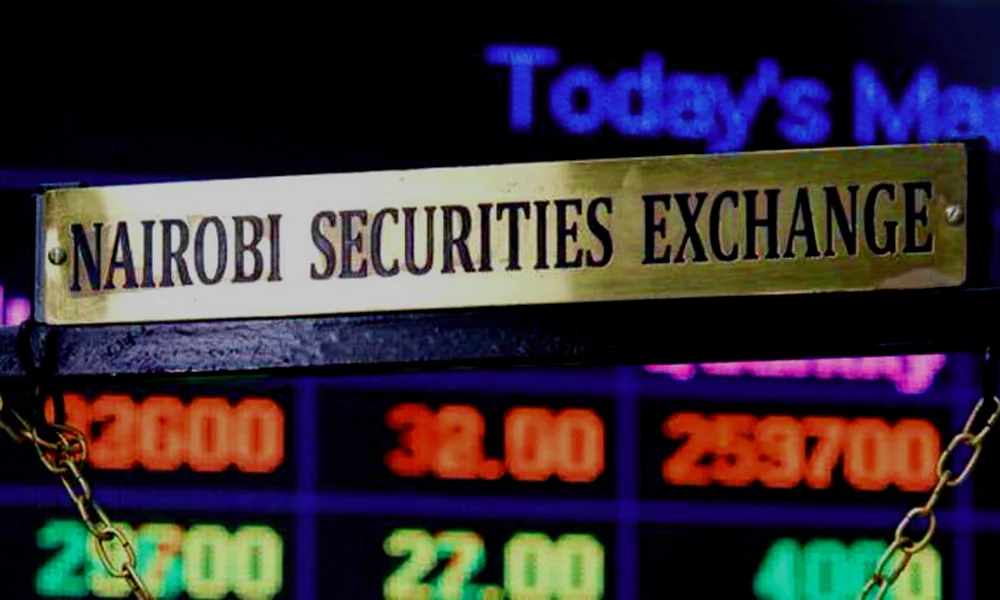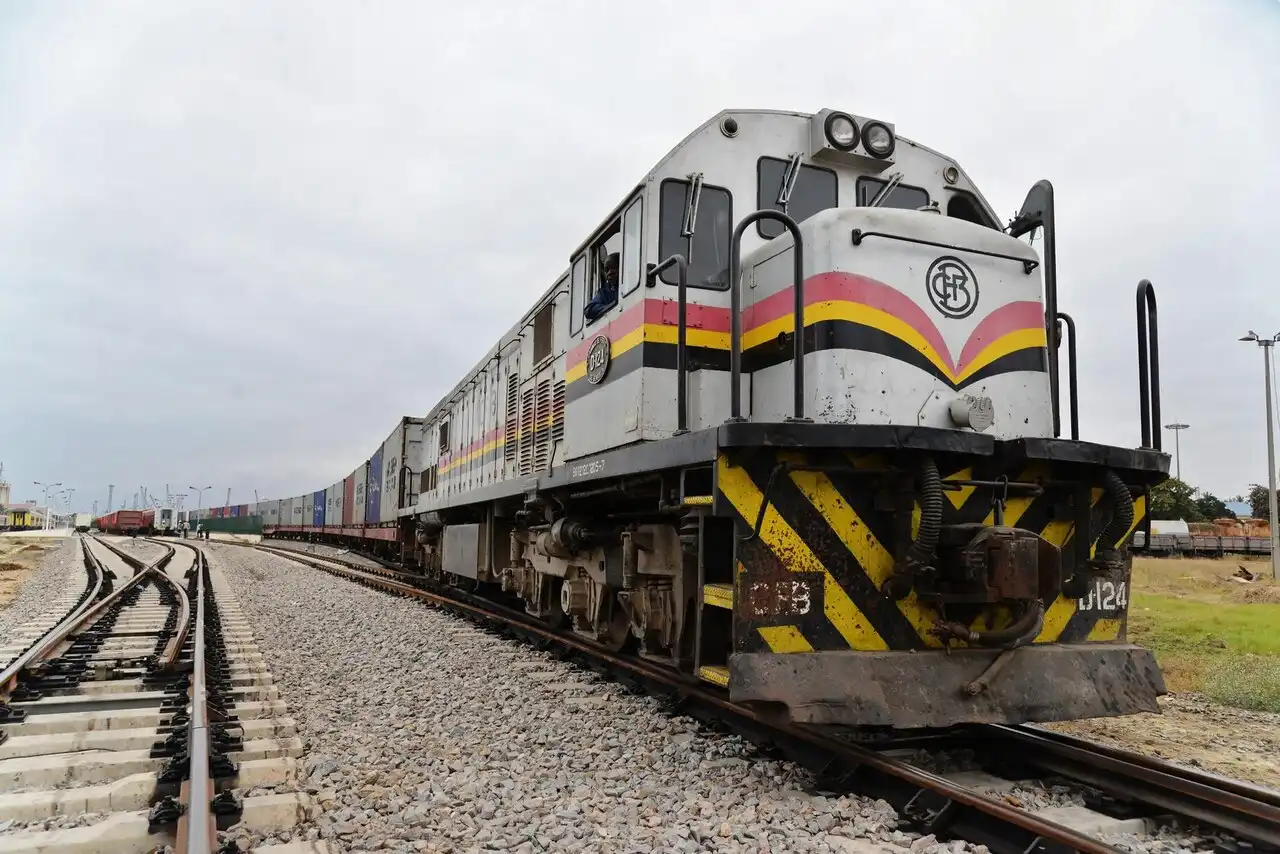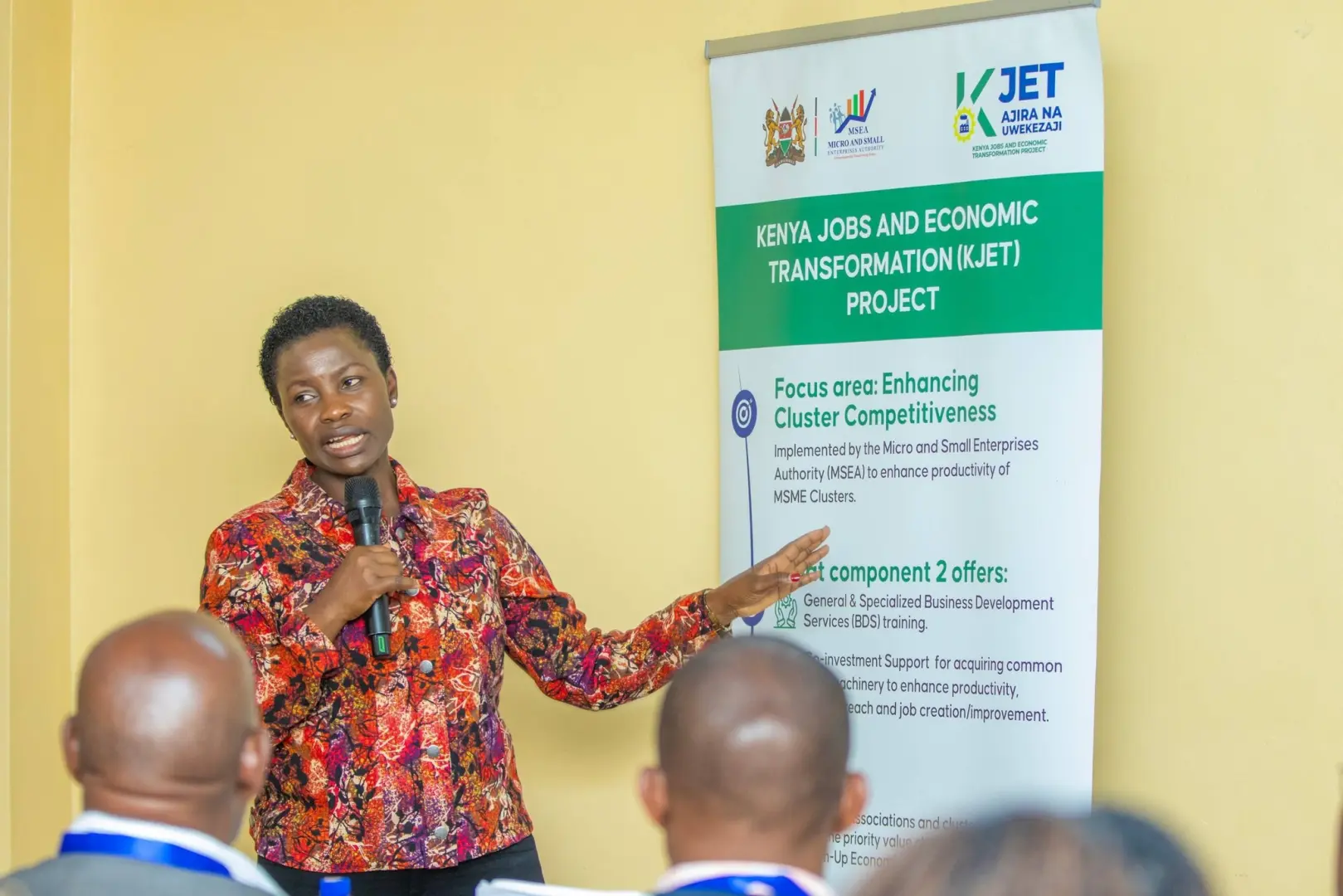The Nairobi Securities Exchange (NSE) has announced its decision to rejoin the East African Capital Markets Infrastructure (CMI) platform after nearly a decade of boycott over procurement irregularities, marking a pivotal moment in the region’s financial integration efforts. This development represents the most significant advancement in East African capital markets cooperation since the project’s inception and positions the region for unprecedented growth in cross-border trading and investment.
Build the future you deserve. Get started with our top-tier Online courses: ACCA, HESI A2, ATI TEAS 7, HESI EXIT, NCLEX-RN, NCLEX-PN, and Financial Literacy. Let Serrari Ed guide your path to success. Enroll today.
Strategic Reversal Ends Decade-Long Standoff
The NSE’s return to the CMI platform marks the end of a contentious dispute that began in 2015 when Kenya withdrew from the project during its initial stages. The exchange had cited procurement irregularities after a tender for the software connecting regional exchanges was awarded to a Pakistan-based technology firm, leading to Kenya’s protest over what it perceived as flawed procurement processes.
The significance of this reconciliation cannot be overstated, considering that Nairobi operates the region’s largest stock market with 64 listed companies, many of which maintain cross-listings in Rwanda, Tanzania, and Uganda. The NSE’s participation brings substantial market capitalization and liquidity to the unified platform, potentially transforming the dynamics of regional capital markets.
Addressing Previous Concerns
Initially, Kenya had established tough conditions for its return, including demands for fresh procurement of the connecting software and clarity from the EAC Secretariat regarding financing modalities for system maintenance and cost-bearing responsibilities. However, the NSE has now waived these demands, prioritizing the business opportunities that regional integration presents over procedural concerns.
This pragmatic shift reflects a broader strategic recalibration driven by the exchange’s five-year strategic plan (2025-2029), which targets the listing of approximately 40 new companies. The exchange anticipates that a significant portion of these new listings will emerge from cross-border opportunities facilitated by the unified platform.
Understanding the Capital Markets Infrastructure Project
The East African Capital Markets Infrastructure project, initially funded by the World Bank, represents an ambitious technological initiative designed to electronically connect regional exchanges to operate as a unified trading platform. The system aims to dramatically reduce the time and cost associated with cross-border equity trading throughout the East African Community (EAC) bloc.
The CMI platform comprises three sophisticated subsystems that enable seamless integration: the Smart Order Router (SOR), Central Depository Systems Interface (CDSI), and a secure messaging layer utilizing FIX and SWIFT protocols. This technological architecture allows participants to access all East African markets through a single interface, regardless of their physical location, requiring only reliable internet connectivity.
Current Platform Status
While Kenya remained absent, Tanzania, Uganda, and Rwanda successfully interconnected their trading systems to the CMI platform. The three markets have been operating effectively under this unified system, demonstrating the platform’s viability and creating momentum for broader regional adoption.
The project’s second phase, as outlined by Rwanda Stock Exchange CEO Celestin Rwabukumba, who previously served as chairperson of the East African Securities Exchanges Association (EASEA), focuses on bringing all regional exchanges onto the platform. This expansion includes newer markets such as Somalia, Burundi, and Ethiopia, with additional East African markets expected to launch their exchanges in the coming years.
The EAE 20-Share Index: A Regional Benchmark
A significant milestone in regional integration occurred in April 2025 when EASEA officially launched the East Africa Exchanges (EAE) 20-Share Index, marking the first integrated regional stock market index. This market capitalization-weighted index comprises the top 20 listed public companies from multiple sectors across Nairobi, Tanzania, Uganda, and Rwanda stock exchanges.
Index Composition and Market Representation
The EAE 20-Share Index represents over 85 percent of the region’s equity market capitalization, featuring prominent companies including Safaricom, KCB Group, Equity Group, Co-operative Bank, and Absa Bank Kenya from the Kenyan market. The Tanzanian representation includes CRDB Bank Plc, NMB Bank Plc, Tanzania Breweries Ltd, Tanga Cement Company Ltd, and Tanzania Cigarette Corporation.
From Rwanda, the index includes I&M Bank (Rwanda) Plc, Cimerwa Plc, and MTN Rwandacell Plc, while Uganda contributes MTN Uganda Ltd, Stanbic Uganda Holdings, Bank of Baroda (Uganda), Airtel Uganda Ltd, and Quality Chemical Industries Ltd. This diverse composition across banking, telecommunications, manufacturing, and consumer goods sectors provides investors with comprehensive exposure to East Africa’s economic growth drivers.
The index serves multiple functions: enhancing market transparency, providing a reliable benchmark for tracking regional market performance, and creating opportunities for developing innovative financial instruments including exchange-traded funds and other index-linked products.
Economic Impact and Regional Integration Benefits
The unified capital markets platform addresses fundamental challenges that have historically limited East African capital markets development. Despite the region’s economic growth potential, individual markets have struggled with limited liquidity, small investor bases, and inadequate cross-border investment flows.
Addressing Market Fragmentation
African securities exchanges face significant structural challenges, with over 30 independent exchanges across the continent stretching limited capital and expertise. The East African integration model provides a practical solution to these limitations by creating economies of scale and enhanced liquidity pools.
The creation of a single EAC capital market offers domestic investors greater choice while providing issuers with access to larger capital pools from diverse investor bases. This expanded access enables more effective capital raising, supporting business growth and employment expansion across the region.
Regional Trade and Investment Dynamics
Currently, less than 17 percent of Africa’s commercial value is generated through intra-African trade, compared to 35-40 percent for intra-East Asia trade. The capital markets integration initiative directly supports broader regional integration objectives by facilitating cross-border investment and financial flows.
East Africa’s economic fundamentals support this integration effort, with the region expected to experience growth of 5.1% in 2024 and 5.7% in 2025, compared to 3.5% in 2023, according to African Development Bank projections. This growth trajectory, combined with improved capital markets infrastructure, positions the region favorably for increased international and regional investment.
NSE’s Strategic Positioning and Growth Prospects
The NSE’s return to regional integration aligns with its ambitious growth strategy and recognition of changing market dynamics. The exchange currently faces challenges from recent delistings and trading suspensions that have reduced its active trading roster.
Current Market Composition
Of the NSE’s 64 listed companies, five have been delisted: Marshall East Africa Ltd, Hutchings Biemer, A. Baumann, KenolKobil Ltd, and National Bank of Kenya. Additionally, four companies—Deacons, ARM Cement, Mumias Sugar Company, and Bamburi Cement—have been suspended from trading, highlighting the need for market revitalization through new listings and enhanced regional participation.
The exchange’s strategic plan recognizes that regional integration could provide access to a broader pool of retail investors and facilitate cross-listings that would boost trading activity. Frank Mwiti, CEO of the NSE, emphasized that the exchange anticipates “more retail investors from the region,” which informed the decision to rejoin the platform.
Innovation and Technology Integration
Beyond regional integration, the NSE has been pursuing technological innovation to maintain competitiveness. The exchange recently joined the Hedera Council to accelerate tokenization initiatives using blockchain technology, demonstrating commitment to next-generation financial infrastructure.
This technological focus, combined with regional integration, positions the NSE to offer innovative products and services that could attract both traditional and digital-native investors to the platform.
Competitive Landscape and Market Developments
The NSE’s return occurs within a rapidly evolving competitive landscape as new trading platforms emerge to challenge traditional exchange models. The East African Bond Exchange (EABX), approved by Kenya’s Capital Markets Authority in January 2024, represents significant competition for fixed-income trading, particularly through its over-the-counter (OTC) operations.
Fixed Income Market Evolution
The approval of the EABX, with the Kenya Bankers Association as anchor shareholder representing 47 member banks, creates new dynamics in the regional fixed-income market. The platform aims to eventually offer trading of fixed-income securities from other EAC member states, directly competing with traditional exchange-based trading.
In response, the NSE has operationalized a hybrid fixed-income market combining both on-screen and OTC trading of fixed-income securities. This strategic response demonstrates the exchange’s adaptability to evolving market structures and competitive pressures.
Fuel your success with knowledge that matters. Enroll in our Online programs: ACCA, HESI A2, ATI TEAS 7, HESI EXIT, NCLEX-RN, NCLEX-PN, and Financial Literacy. Join Serrari Ed now and take control of your future.
Regulatory Framework and Standards Alignment
The success of regional capital markets integration depends significantly on regulatory harmonization and standards alignment across participating markets. All four major EAC capital markets operate under similar legal frameworks, with minor divergences reflecting different developmental stages.
International Standards Compliance
Kenya, Uganda, and Tanzania maintain membership in the International Organisation of Securities Commissions (IOSCO), the international body establishing securities regulation standards and best practices. Kenya and Tanzania have achieved Appendix A signatory status under the IOSCO Multi-Lateral Memorandum of Understanding on information sharing and cooperation, while Uganda works toward advancing from Appendix B to Appendix A status.
This regulatory alignment facilitates cross-border trading by ensuring compatible oversight and investor protection standards across participating markets.
Settlement and Clearing Infrastructure
All four EAC capital markets maintain Central Securities Depositories (CSDs), with varying structures reflecting market development levels. Kenya and Uganda operate two CSDs each—one for exchange-listed securities and another for government bonds—while Tanzania and Rwanda utilize single CSDs for all securities types.
The harmonization of settlement cycles, with most markets operating on T+3 settlement (Rwanda recently moved to T+2), supports unified platform operations and reduces operational complexity for cross-border trading.
African Development Bank’s Strategic Role
The African Development Bank’s involvement has been crucial in advancing the project’s second phase. Reports indicate that the AfDB demanded Kenya’s participation before considering funding proposals for expansion, highlighting the NSE’s critical importance to regional integration success.
This development finance institution support reflects broader continental initiatives to strengthen capital markets infrastructure. The AfDB’s involvement brings both financial resources and technical expertise essential for scaling the platform to accommodate additional markets and enhanced functionality.
Continental Integration Context
The East African integration effort operates within the broader context of continental financial integration initiatives. The African Securities Exchanges Association (ASEA), representing 25 exchanges across 37 African countries, promotes capital mobilization, sustainability, and financial inclusion for Africa’s economic development.
The success of the EAC integration model could influence similar initiatives across other African regions, potentially contributing to eventual continental capital markets integration.
Technology Infrastructure and Digital Innovation
The CMI platform’s technological sophistication enables advanced functionality that goes beyond simple trade routing. The secure messaging layer utilizing FIX and SWIFT protocols ensures compatibility with international trading standards while maintaining robust security for cross-border transactions.
Digital Transformation Impact
The platform’s online accessibility removes geographical constraints on market participation, enabling investors throughout the region to access multiple markets through unified interfaces. This digital transformation aligns with broader trends toward digitalization of financial services across Africa.
The integration also supports development of innovative financial products, including cross-border exchange-traded funds, regional bonds, and other instruments that leverage the unified market infrastructure.
Retail Investor Participation and Financial Inclusion
One of the most significant potential benefits of regional integration is expanded retail investor participation. Currently, retail participation in African markets remains low compared to other regions, with only 2.7% of Kenya’s population holding Central Depository System accounts.
Expanding Investor Base
The unified platform creates opportunities to expand the retail investor base by providing access to diverse investment opportunities across multiple markets through single interfaces. This expanded choice could encourage increased participation by offering investments aligned with different risk preferences and sector interests.
Mobile technology integration, demonstrated by Kenya’s successful M-Akiba government securities platform that raised over KES1 billion from first-time investors, shows the potential for technology-enabled financial inclusion in regional capital markets.
Future Expansion and Market Development
The second phase of the CMI project envisions bringing additional markets online, including the emerging Ethiopian Securities Exchange, which launched in January 2025, and planned exchanges in Somalia and Burundi. This expansion would significantly increase the platform’s market coverage and investment opportunities.
Ethiopian Market Integration Potential
Ethiopia’s new securities exchange, serving Africa’s second-most populous country with GDP growth projected at 6.5% in 2025, represents substantial addition potential for the regional platform. The country’s transition from state-controlled to market-driven economic models creates opportunities for significant capital markets development.
The integration of such markets would provide investors access to economies with different sectoral focuses and growth drivers, enhancing portfolio diversification opportunities within the East African context.
Investment Product Innovation
Regional integration enables development of innovative investment products that leverage cross-border opportunities. The established index infrastructure provides the foundation for exchange-traded funds tracking regional performance, while unified settlement systems support cross-border bond issuance and trading.
Cross-Border Instrument Development
The platform’s capability to handle multiple currencies and regulatory frameworks enables development of regional investment instruments that combine exposure to different markets and currencies. Such products could attract both regional and international investors seeking diversified African exposure through single instruments.
The success of cross-listing initiatives, with seven, five, and three companies cross-listed from the NSE to USE, DSE, and RSE respectively, demonstrates market appetite for such diversified exposure.
Economic Development Impact
Capital markets integration supports broader economic development objectives by improving capital allocation efficiency and reducing financing costs for businesses across the region. Enhanced liquidity and competition should lead to better pricing and improved access to capital for regional businesses.
SME Access to Capital
Unified markets could particularly benefit small and medium-sized enterprises (SMEs) by providing access to broader investor bases and diverse funding sources. Regional integration creates opportunities for SMEs to access investors beyond their home markets, potentially reducing financing constraints that limit growth.
The platform’s standardized processes and technological infrastructure could also reduce the cost and complexity of cross-border capital raising for smaller companies.
Conclusion: Transforming Regional Financial Landscape
The NSE’s return to the East African Capital Markets Infrastructure platform represents more than the resolution of a decade-long dispute—it marks the beginning of a new era in regional financial integration that could transform how capital flows and investments operate across East Africa.
The success of this integration effort will depend on continued political support, technological development, and market participant adoption. However, the foundation established through the CMI platform, combined with the EAE 20-Share Index and planned expansion to additional markets, creates substantial potential for enhanced regional economic integration.
For investors, the unified platform offers unprecedented access to diversified East African opportunities through standardized, efficient processes. For issuers, it provides access to broader capital pools and enhanced liquidity. For the region, it represents a crucial step toward the economic integration envisioned in the EAC’s broader development agenda.
As the platform scales to include additional markets and develops innovative financial products, it could serve as a model for capital markets integration efforts across other African regions, contributing to the continent’s broader economic transformation objectives.
This development story will continue to evolve as the CMI platform scales operations and additional markets join the unified system. The success of this integration effort will significantly influence future approaches to capital markets development across Africa.
Ready to take your career to the next level? Join our Online courses: ACCA, HESI A2, ATI TEAS 7 , HESI EXIT , NCLEX – RN and NCLEX – PN, Financial Literacy!🌟 Dive into a world of opportunities and empower yourself for success. Explore more at Serrari Ed and start your exciting journey today! ✨
Track GDP, Inflation and Central Bank rates for top African markets with Serrari’s comparator tool.
See today’s Treasury bonds and Money market funds movement across financial service providers in Kenya, using Serrari’s comparator tools.
Photo source: Google
By: Montel Kamau
Serrari Financial Analyst
9th September, 2025
Article, Financial and News Disclaimer
The Value of a Financial Advisor
While this article offers valuable insights, it is essential to recognize that personal finance can be highly complex and unique to each individual. A financial advisor provides professional expertise and personalized guidance to help you make well-informed decisions tailored to your specific circumstances and goals.
Beyond offering knowledge, a financial advisor serves as a trusted partner to help you stay disciplined, avoid common pitfalls, and remain focused on your long-term objectives. Their perspective and experience can complement your own efforts, enhancing your financial well-being and ensuring a more confident approach to managing your finances.
Disclaimer: This article is for informational purposes only and does not constitute financial advice. Readers are encouraged to consult a licensed financial advisor to obtain guidance specific to their financial situation.
Article and News Disclaimer
The information provided on www.serrarigroup.com is for general informational purposes only. While we strive to keep the information up to date and accurate, we make no representations or warranties of any kind, express or implied, about the completeness, accuracy, reliability, suitability, or availability with respect to the website or the information, products, services, or related graphics contained on the website for any purpose. Any reliance you place on such information is therefore strictly at your own risk.
www.serrarigroup.com is not responsible for any errors or omissions, or for the results obtained from the use of this information. All information on the website is provided on an as-is basis, with no guarantee of completeness, accuracy, timeliness, or of the results obtained from the use of this information, and without warranty of any kind, express or implied, including but not limited to warranties of performance, merchantability, and fitness for a particular purpose.
In no event will www.serrarigroup.com be liable to you or anyone else for any decision made or action taken in reliance on the information provided on the website or for any consequential, special, or similar damages, even if advised of the possibility of such damages.
The articles, news, and information presented on www.serrarigroup.com reflect the opinions of the respective authors and contributors and do not necessarily represent the views of the website or its management. Any views or opinions expressed are solely those of the individual authors and do not represent the website's views or opinions as a whole.
The content on www.serrarigroup.com may include links to external websites, which are provided for convenience and informational purposes only. We have no control over the nature, content, and availability of those sites. The inclusion of any links does not necessarily imply a recommendation or endorsement of the views expressed within them.
Every effort is made to keep the website up and running smoothly. However, www.serrarigroup.com takes no responsibility for, and will not be liable for, the website being temporarily unavailable due to technical issues beyond our control.
Please note that laws, regulations, and information can change rapidly, and we advise you to conduct further research and seek professional advice when necessary.
By using www.serrarigroup.com, you agree to this disclaimer and its terms. If you do not agree with this disclaimer, please do not use the website.
www.serrarigroup.com, reserves the right to update, modify, or remove any part of this disclaimer without prior notice. It is your responsibility to review this disclaimer periodically for changes.
Serrari Group 2025
















